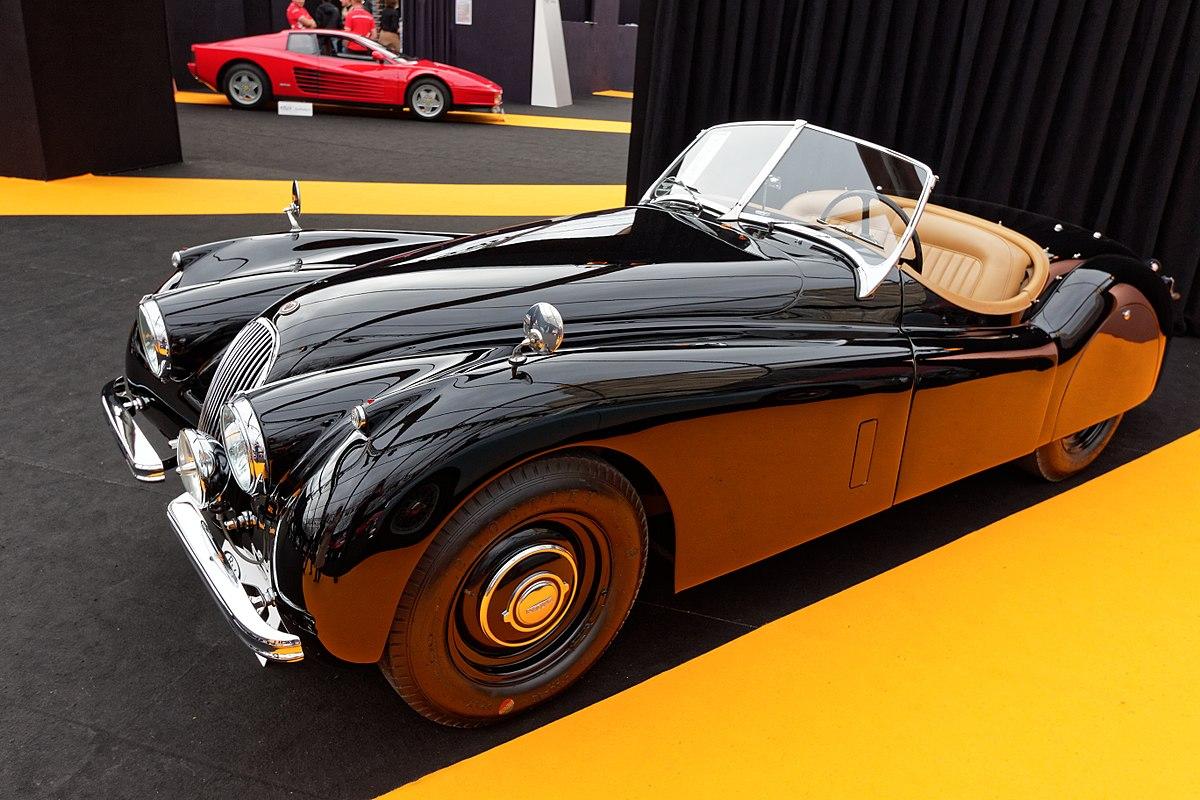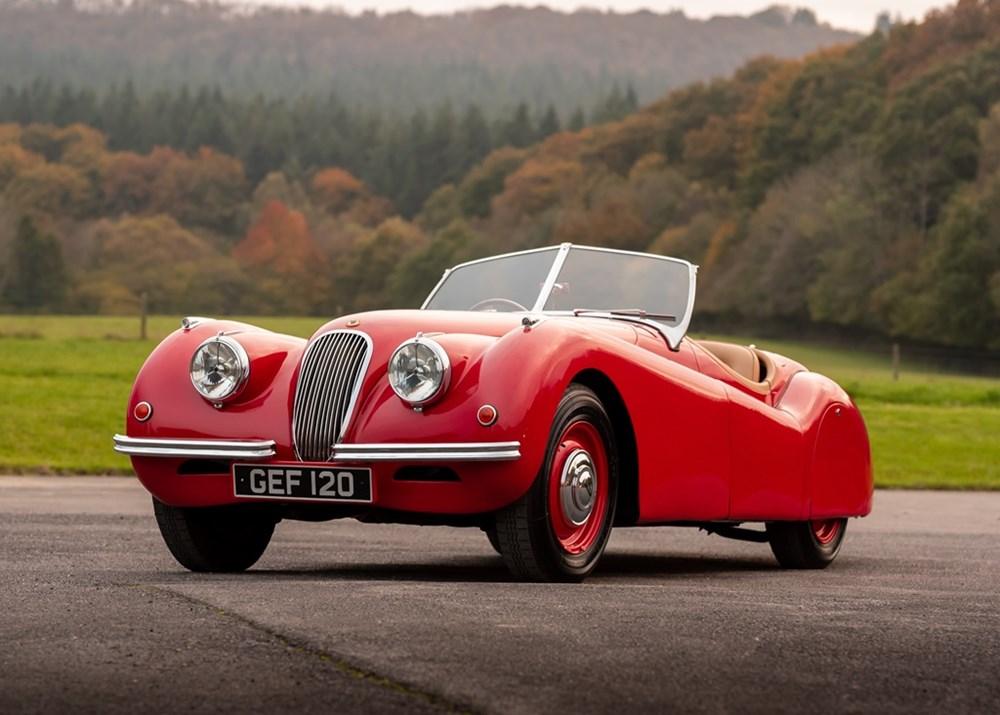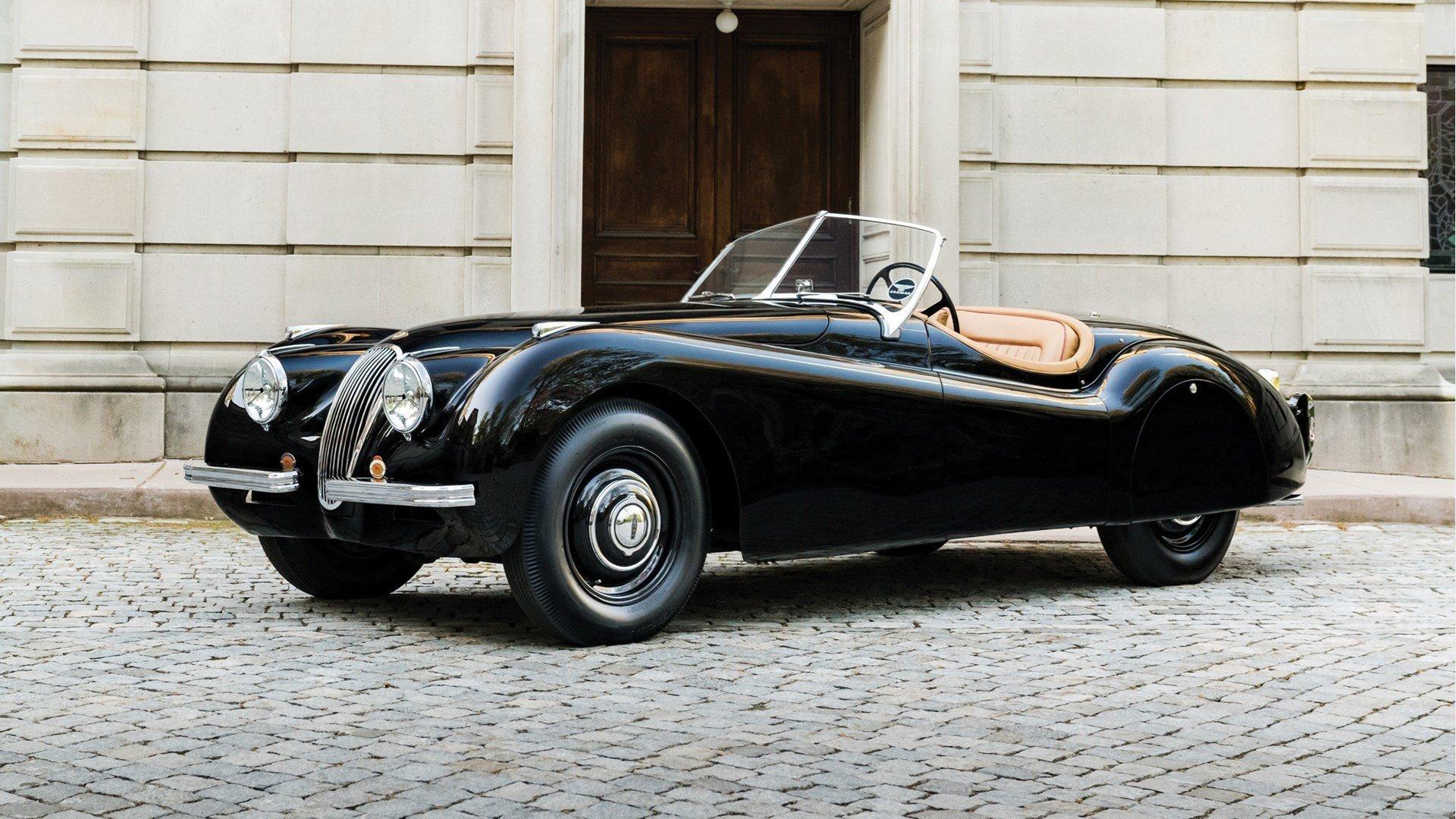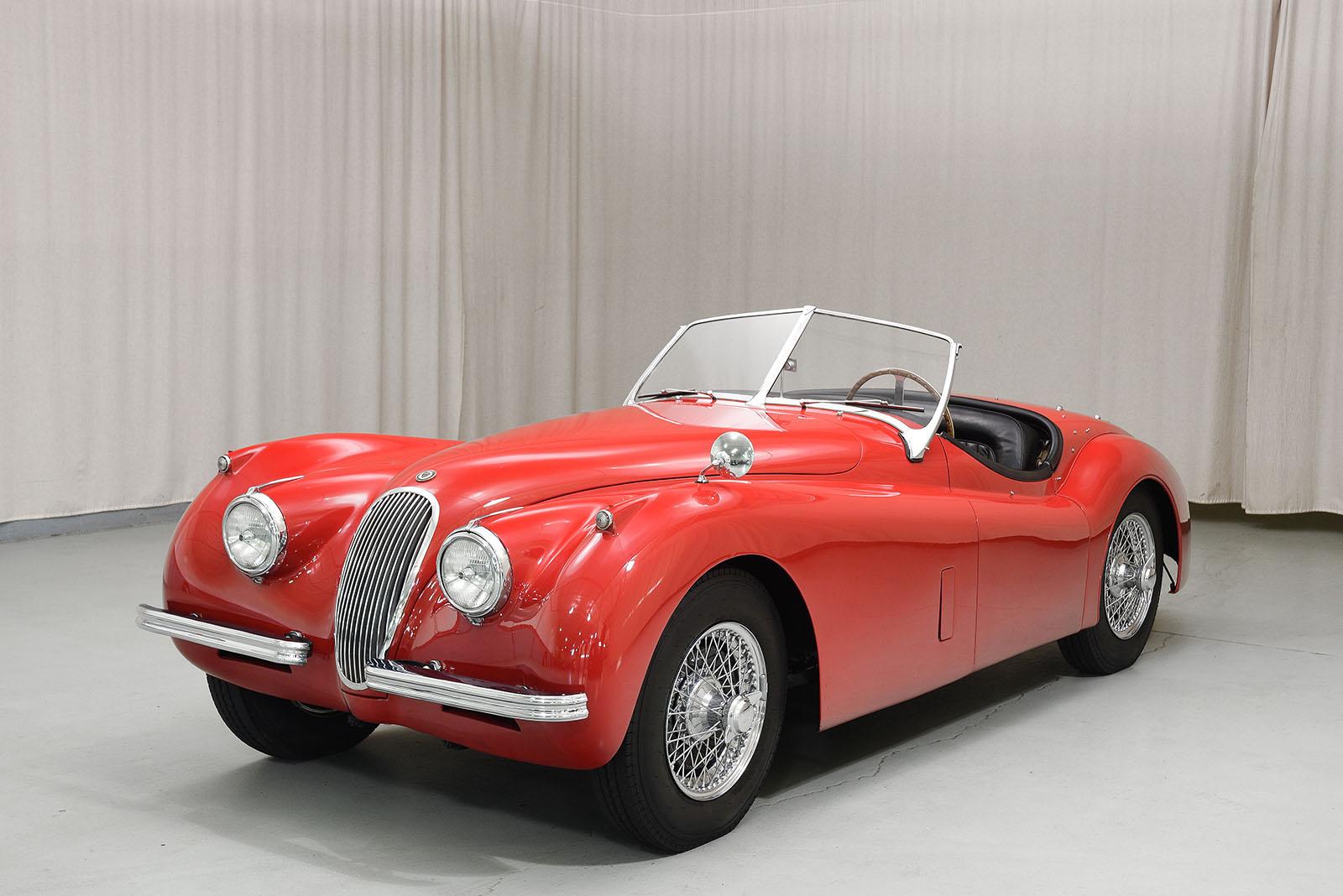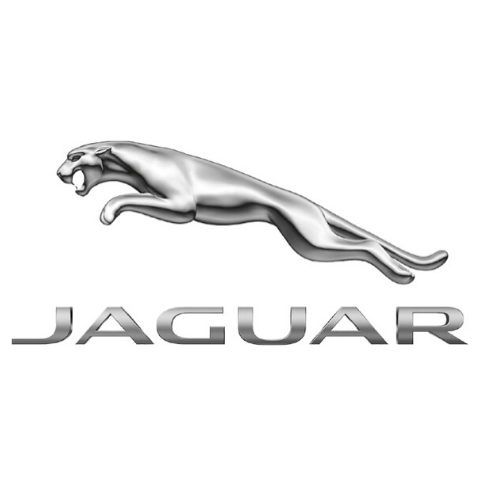1950 Jaguar XK 120
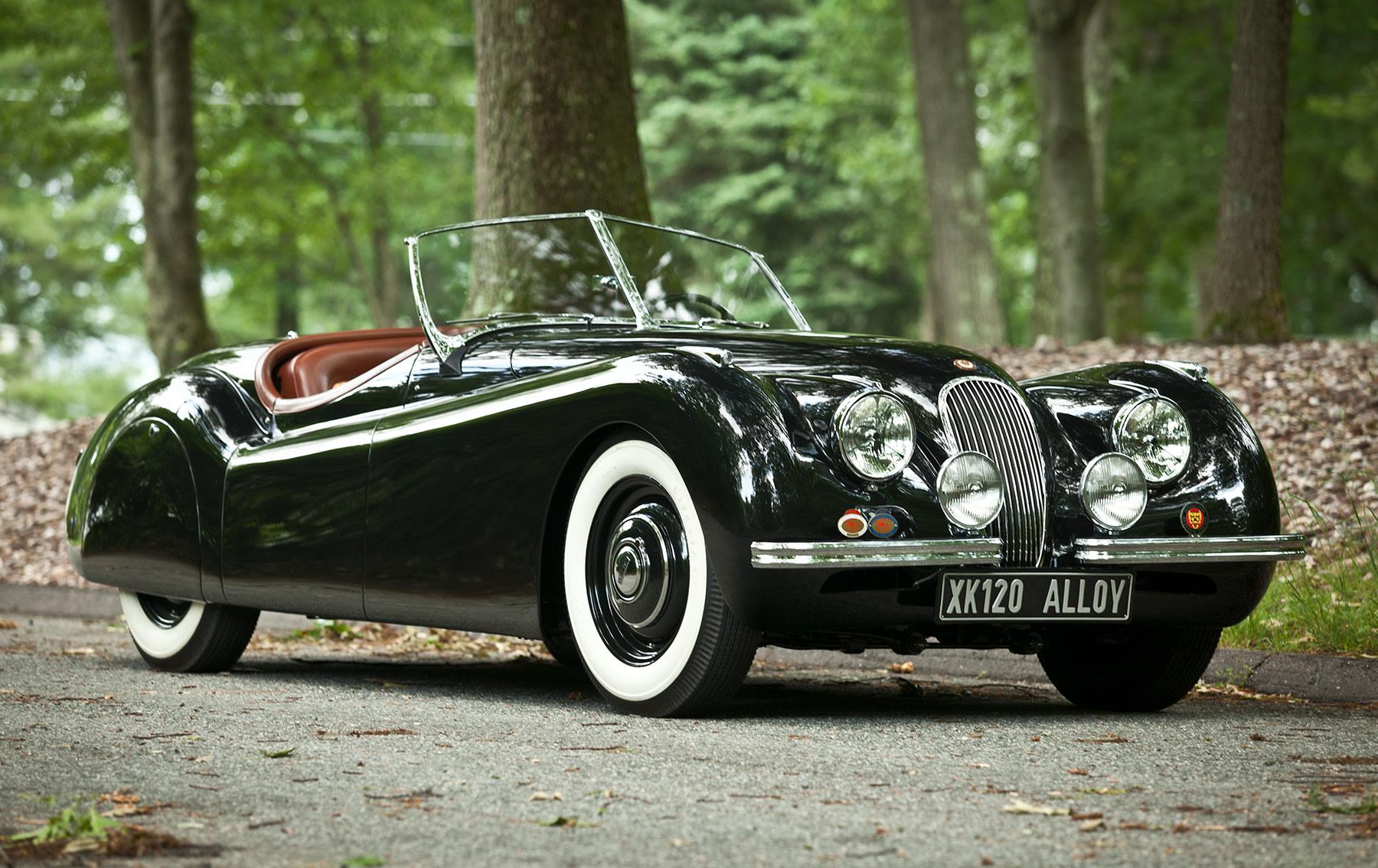
The descriptions of the Classic Cars in the Directory were partly generated or supplemented with the help of artificial intelligence (AI). The content may occasionally not always be entirely accurate or factually correct despite careful checking.
The Jaguar XK 120, manufactured from 1948 to 1954, was first presented to the public at the Earls Court Motor Show in the UK. Deemed as one of the most significant automobiles in automotive history, the XK 120 was the first sports car to feature a twin overhead camshaft engine with an inline six-cylinder configuration. The initial intention was to create a racing car rather than a production model, but the car’s design, engineering, and performance proved to be a winning combination that was well-received by car enthusiasts worldwide.
Under the XK 120’s long and sculpted bonnet, the engine is a 3.4-liter inline six-cylinder unit that produces 160 horsepower at 5100 rpm. Its engine utilizes an advanced dual overhead camshaft (DOHC) system – a revolutionary technology in the early ‘50s. Additionally, the engine features lightweight aluminum cylinder heads, hemispherical combustion chambers, and twin SU carburetors. These features provide the engine with exceptional power, smoothness, and impressive performance.
As one would expect, the Jaguar XK 120 is also equipped with an advanced suspension system comprised of a torsion bar and independent front suspension. The suspension provides a stable and precise handling capability that makes driving the car more enjoyable. The front suspension system consists of double wishbones with a torsion bar located between the upper and lower wishbones. The rear of the car features a rigid axle on leaf springs.
The braking system on the Jaguar XK 120 is a hydraulic drum brake system, with four-wheel independent suspension. The car’s braking system is reliable and effective, stopping quickly even in high-speed situations. The steering system is also modern, with a rack and pinion configuration that provides accurate and responsive steering.
Inside, the XK 120 has an elegant and simple design. The dashboard is made of wood, featuring a set of gauges and a centrally located speedometer – displaying pertinent information to the driver. The seats are upholstered in leather, style with poise and comfortability. The car's body structure is also made of lightweight aluminum, which, combined with the powerful engine, makes the XK 120 one of the fastest cars of its time, with a top speed of 120 mph.
In conclusion, the Jaguar XK 120, with its advanced technology, innovative design, and excellent performance, remains a top contender in the sports car market, over 70 years since its initial release. The vehicle possesses a sense of vintage cachet, yet its impressive technical specifications make it a car for enthusiasts of all ages.
Milestones
- May 1948: The Jaguar XK 120 is officially unveiled at the Earls Court Motor Show in London - 1949: Production of the XK 120 begins - August 1949: A modified XK 120 breaks the land speed record for production cars, reaching a top speed of 132.6 mph - 1950: The XK 120 becomes the first Jaguar sports car to be offered with an automatic transmission option - 1950: The XK 120 wins the Alpine Rally, a 2,000 mile race through the Alps - 1951: The XK 120 wins the prestigious 24 Hours of Le Mans endurance race - 1953: The XK 120 is upgraded with a more powerful engine, bumping horsepower up to 190 - 1954: Production of the XK 120 ends, with a total of 12,055 units produced.Technical
• Engine: Twin overhead camshaft, straight six-cylinder engine • Displacement: 3.4 liters • Power output: 160 horsepower • Top speed: 120 mph • Acceleration (0-60 mph): 10 seconds • Transmission: 4-speed manual (standard), 3-speed automatic (optional) • Front suspension: Independent with torsion bar • Rear suspension: Semi-elliptic leaf springs • Brakes: Hydraulic drum brakes • Steering: Manual recirculating ball • Wheelbase: 102 inches • Length: 14 feet, 9 inches • Weight: 2,900 pounds (approx.) • Body: Two-seat, open-top roadster convertible • Production years: 1948-1954